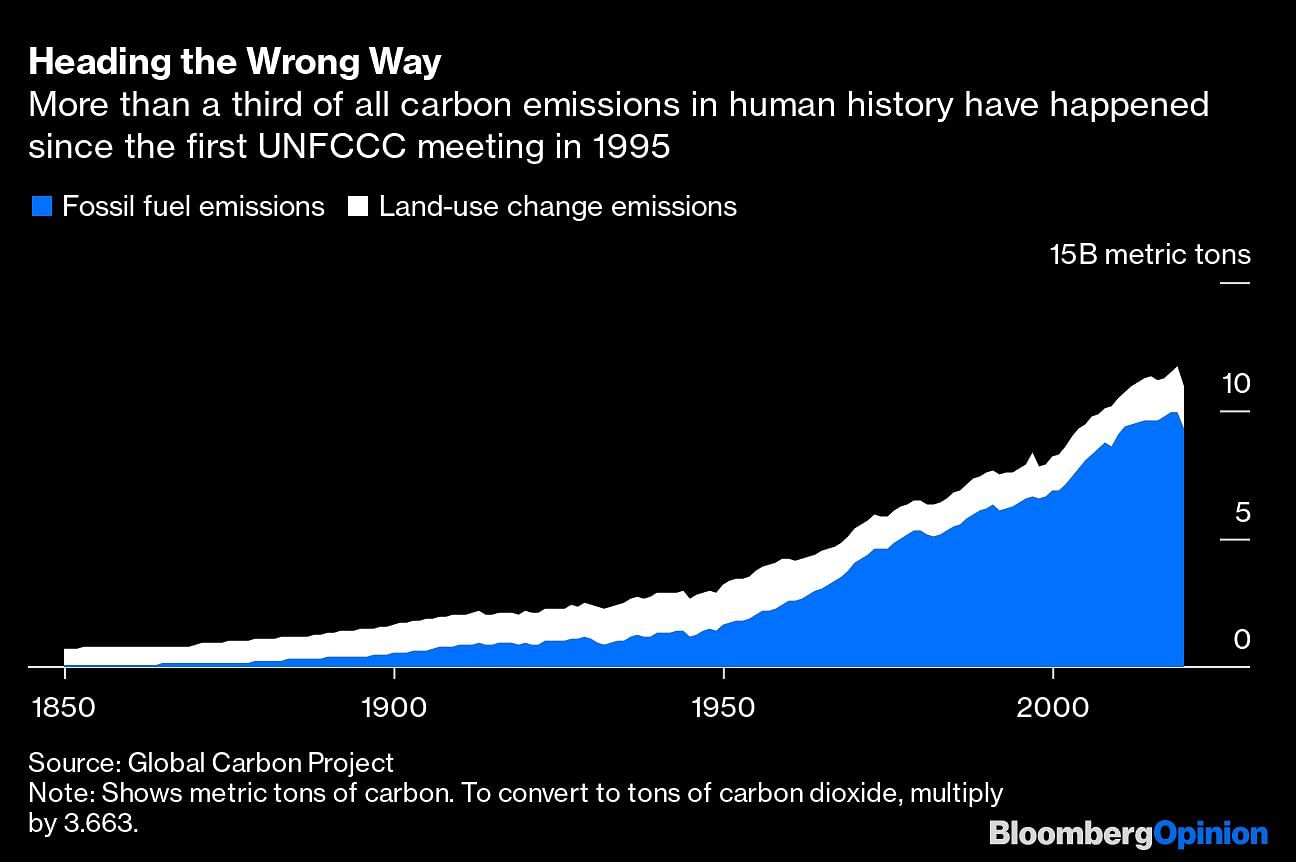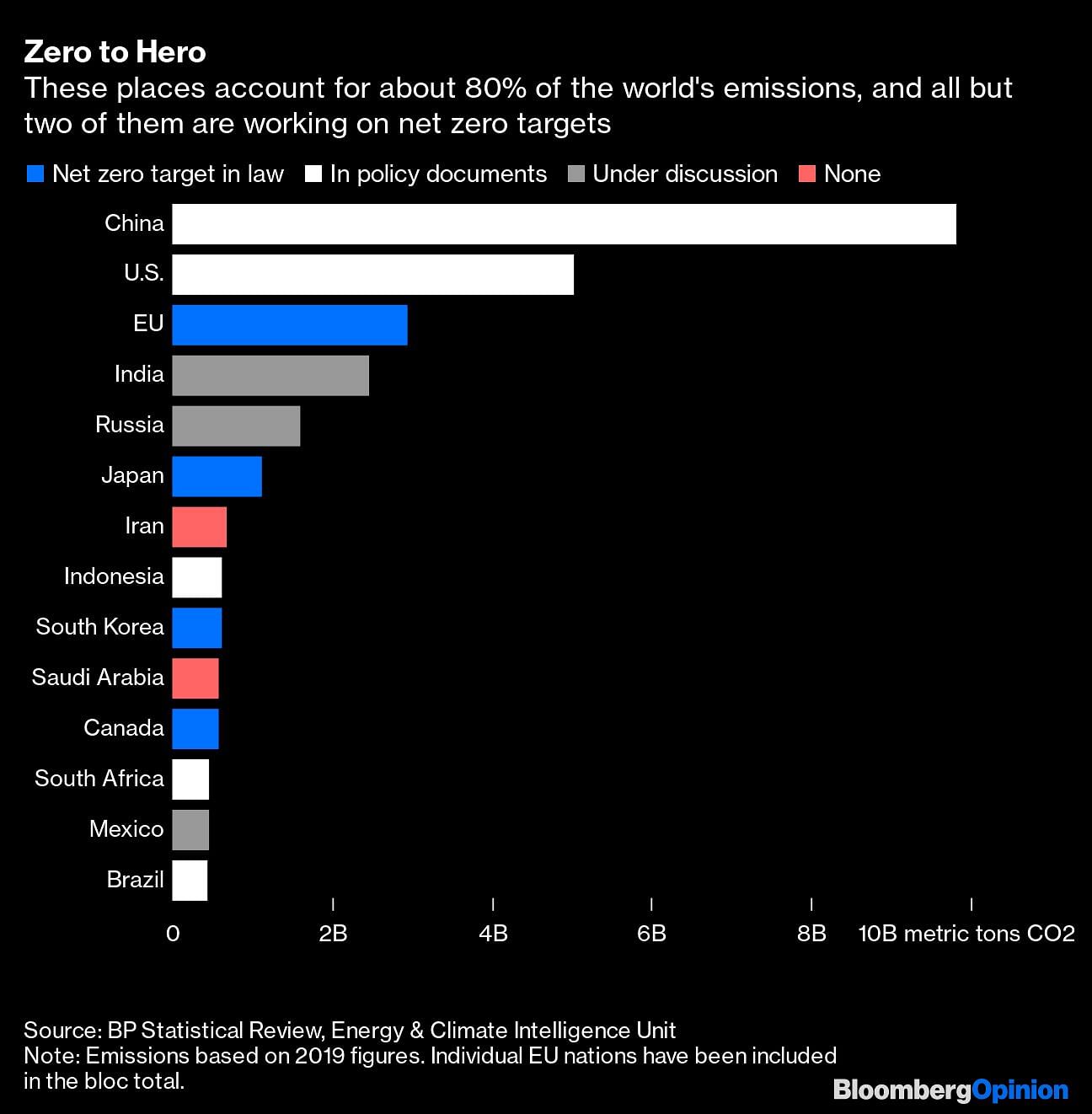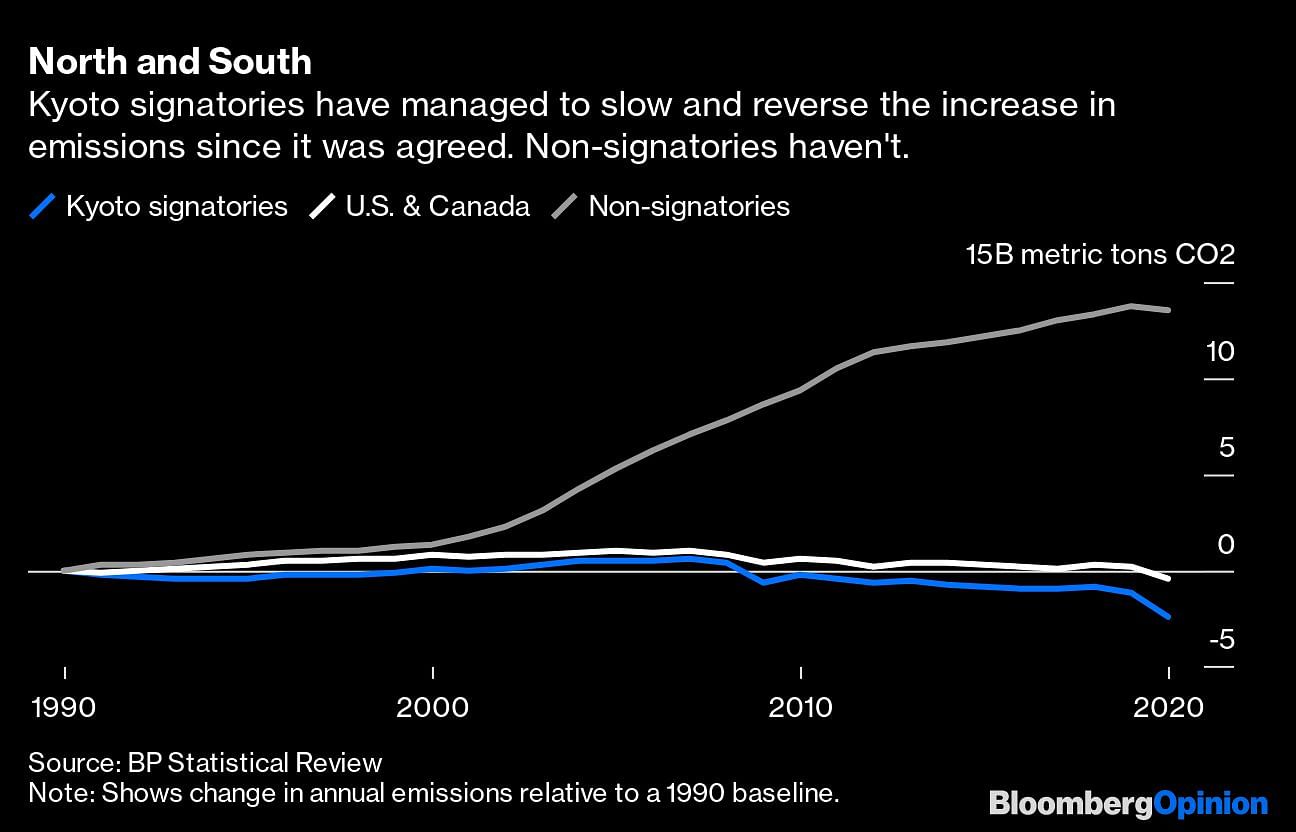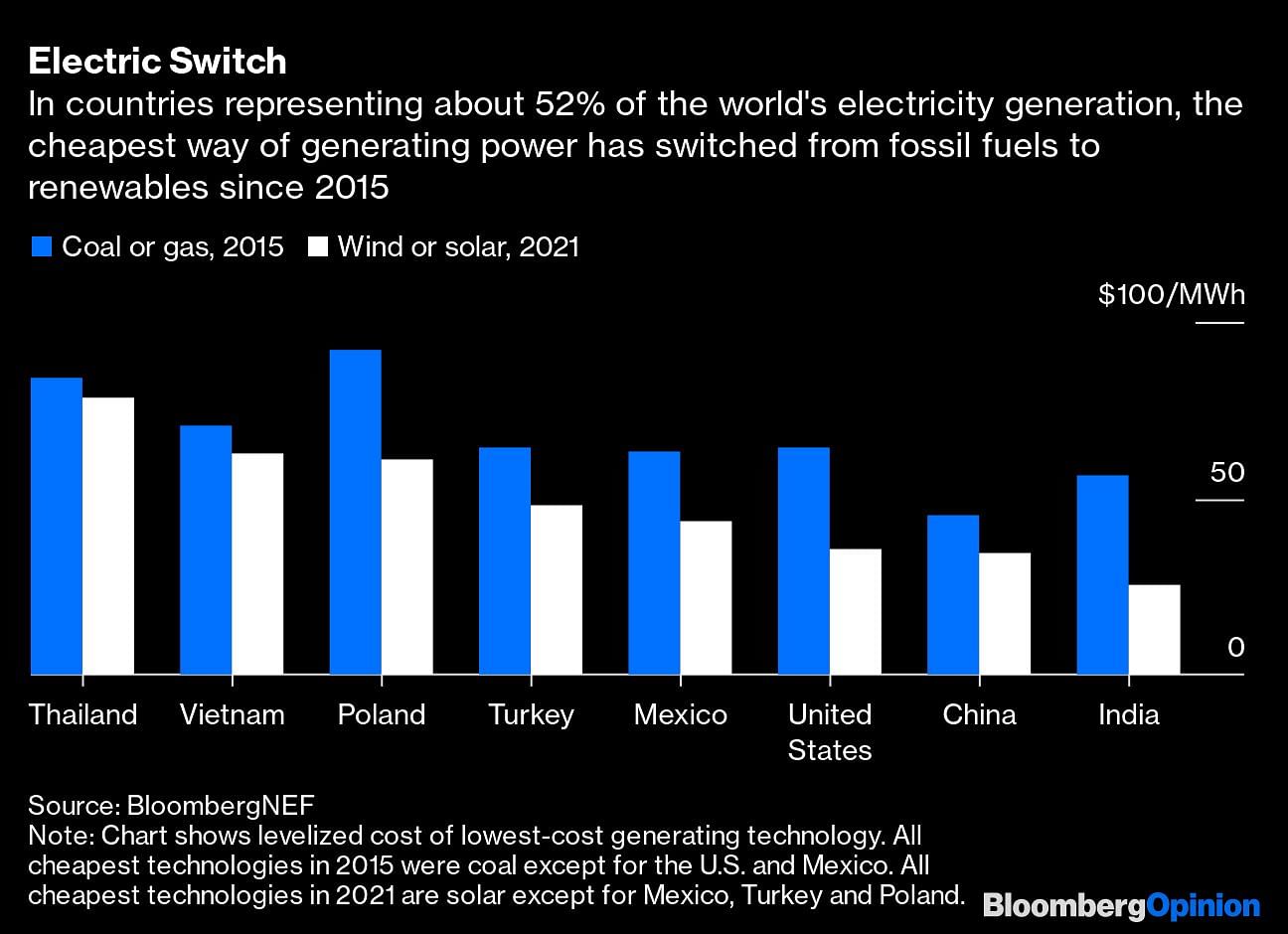There have been 25 conferences under the United Nations Framework Convention on Climate Change since the body first met in 1995. Over that period, some 894 billion metric tons of carbon dioxide, about 37% of all greenhouse pollution in human history, has been emitted. What makes anyone think that the 26th meeting starting Oct. 31 — COP26 — will be any more effective?
The answer lies in the age-old challenges of forging major international agreements — and it may be more hopeful than you think.

One adage of multilateralism is that effective global accords can be deep and narrow, or broad and shallow, but won’t work if they try to be both deep and broad. The 1987 Montreal Protocol, which controlled chemicals that damage the ozone layer, is a classic example of the former. The treaty’s effects are deep — it’s legally binding on every U.N. member state and on its own will reduce global warming by as much as one degree Celsius — but its scope is narrow, in regulating a single niche set of compounds.
The U.N.’s human rights treaties, on the other hand, set sweepingly broad global standards for relations between the individual and the state. Their enforcement, however, is shallow, with even signatories often appearing to treat them as worthless paper promises. Nine of the 10 countries rated lowest for gender equality under the Women Peace and Security Index have ratified the U.N.’s Convention on the Elimination of all Forms of Discrimination Against Women.
This dichotomy puts climate talks at a disadvantage from the start. Their intent is stunningly broad: remaking the energy systems that have powered the entire planet since the Industrial Revolution, as well as land-use practices we’ve employed since the Stone Age. At the same time, enforcement must be deep, because the world can’t afford a repeat of the emissions trajectory we’ve been on since that first meeting.
Also read: India to seek compensation for climate damages caused by rich, developed countries at COP26

To compound the problem, individual nations are deeply divided on how to proceed. This is best exemplified by the split between the Group of Seven major advanced economies — which together have accounted for about 53% of historical carbon emissions — and the Group of 77 developing nations. Controlling emissions in post-industrial economies whose populations have peaked is a far easier business than it is in nations just embarking on the rapid increase in population, income and industrial activity that we call development.
The G-77, whose largest representatives include China, India, Brazil and Indonesia, is often portrayed as the wrecker of negotiations: refusing to accept constraints on the ability to pollute and arguing that richer nations must cut their emissions faster before poorer ones agree to any absolute limits. G-7 countries are accused of making no allowances for the leg-up their own economies received from decades of emissions, and haranguing developing nations that have few alternative options.
This division has frequently shaped the talks. The core of the Kyoto Protocol, the first major climate agreement adopted at COP3 in 1997, was in essence a treaty between the G-7 plus the former Soviet Union, Australia and New Zealand. If action on climate change is going to be hostage to the resolution of centuries-old disputes between colonial nations and their former empires, though, the prospects for the planet are grim, indeed.

Also read: India among countries that could spoil upcoming COP26 in Glasgow
Believe it or not, there’s still reason for optimism. One surprising fact about Kyoto is that an agreement widely considered a failure was in many ways a success. The countries that remained in the deal didn’t just meet the target of a 5% reduction in emissions over the two decades following 1990 — they went well beyond it, with reductions of 11% that deepened to 17% by 2019. That fits well with evidence that ambitious goals are more likely to be achieved than timid ones.
The problem with Kyoto wasn’t that countries didn’t reach the targets they’d committed to — it’s that too few committed to targets at all. Once you include the U.S. and Canada, which pulled out of the protocol, that 11% drop in emissions narrows to a 2.2% fall. Throw in the developing economies that were excluded at the outset, and the picture is even worse. While fossil-fuel emissions from the Organization for Economic Cooperation and Development rich-countries’ club fell about 4.4% between 1998 (the year after Kyoto was signed) and 2019, those from the rest of the world more than doubled.
That points to the last reason for cautious optimism. For most of the time these meetings have been taking place, delegates’ pre-eminent national interest in low-cost energy has been most easily served by remaining wedded to fossil fuels, while the physical risks of climate change have seemed remote and theoretical. Both sides of that equation are now changing with blistering speed.

Renewables are the cheapest source of new power generation for two-thirds of the world’s population, and even undercut existing fossil-fired power in China, India and much of Europe, according to BloombergNEF. Electric vehicles made up 17% of car sales in the European Union in the June quarter, and 13% in China. While the current energy crisis will cause a short-term rise in fossil emissions to plug short supplies of power, China is redoubling its efforts to rein in polluting industries and India has warned that high oil prices will speed the transition to zero-carbon technologies.
On the other side of the ledger, recent floods in China, Germany and India, and wildfires in Canada, plus the most active Atlantic hurricane season on record last year are evidence of the way the effects of climate change are growing ever closer. In just the U.S., there have been 18 separate billion-dollar weather and climate disasters in 2021 alone.
Countries at international conferences aren’t in it for show or charity. They’ll only sign up to agreements that they perceive to be in their best interests. For most of the past three decades, the raw economics of energy and climate have stood in the way of making a worthwhile deal. Finally, now, there’s an ill wind at negotiators’ backs.—Bloomberg
Also read: India among 15 countries whose fossil fuel production exceeds Paris Agreement goals: UN report






